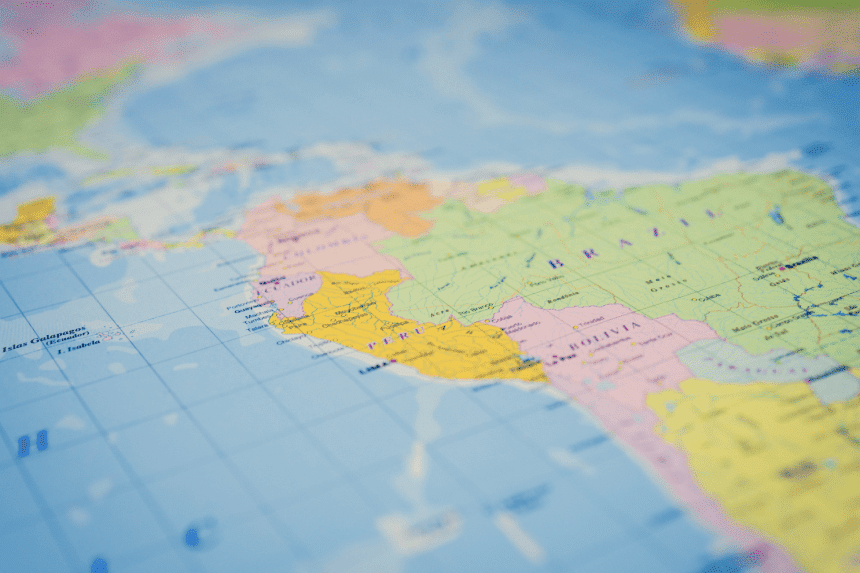Spanish is one of the most widely spoken languages in the world, but just how many countries actually recognize it as their official language? In connection with Spain’s rich history and expansive reach, the Spanish language has spread across continents, and today, millions of people use it in their daily lives. In this post, we’ll explore how many countries have Spanish as their official language, what that means for the language’s global reach, and whether or not Spanish is the most spoken language in the world (spoiler: it’s not).
Video: Spanish Speaking Countries Roundup
In this video, Guide2Fluency team member Bianca does a quick video breaking down all of the countries which use Spanish as their official language.
The Countries That Speak Spanish Officially
As of today, 20 countries officially speak Spanish. Most of these countries are in Latin America, however, Spain (in Europe) and Equatorial Guinea (in Africa) are also on the list. Here’s the full rundown of countries where Spanish is the national language:
- Argentina
- Bolivia
- Chile
- Colombia
- Costa Rica
- Cuba
- Dominican Republic
- Ecuador
- El Salvador
- Equatorial Guinea (the only country in Africa where Spanish is an official language)
- Guatemala
- Honduras
- Mexico (the largest Spanish-speaking country by population)
- Nicaragua
- Panama
- Paraguay
- Peru
- Spain
- Uruguay
- Venezuela
In addition, Puerto Rico, a U.S. territory, recognizes Spanish as an official language alongside English. So make it 21 countries to the extent you care to count Puerto Rico.
As noted, Spanish isn’t just a language used in Spain or Latin America—it’s even spoken in places as far-reaching as Africa and the Caribbean. This global spread and diverse mix of cultures makes it one of the most significant languages on the planet today.
Is Spanish the Most Spoken Language in the World?
While Spanish is incredibly widespread, it’s not actually the most spoken language in the world. It’s definitely far up the list, but not #1.

Here are the rankings of the top five most spoken languages in the world, by total number of speakers (including both native and non-native speakers):
- English (approx.1.4 billion speakers)
- Mandarin Chinese (approx. 1.1 billion speakers)
- Hindi (approx. 600 million speakers)
- Spanish (approx. 595 million speakers)
- Arabic (approx. 400 million speakers)
As you can see, Spanish comes in fourth by total volume of speakers, whether it’s their first language or learned later in life. However, if you look at native speakers alone, Spanish ranks second in the world, with more than 490 million people speaking it as their first language. That puts it behind only Mandarin Chinese, which has over 900 million native speakers.
Why Spanish Isn’t the Top Language
An interesting thought experiment is to analyze why Spanish isn’t the world’s #1 language, especially given the Spanish Empire’s massive historical reach. A few reasons come into play here:
- Population Differences: Spanish-speaking countries, while numerous, don’t have populations as large as countries like China and India, where Mandarin and Hindi dominate. So while Spanish is spread across many countries, those countries tend to have smaller populations compared to the giants of Asia.
- Multilingual Nations: In some countries, Spanish shares space with other major languages. For example, in Spain, people also speak Catalan, Basque, and Galician. In many Latin American countries, indigenous languages are still widely used. In addition, Spanish competes with Portuguese in some South American countries. This contrasts with Mandarin, for example, which is dominant across much of China without much competition from other languages.
- Concentration of Speakers: Languages like Mandarin and Hindi are spoken by massive populations within specific regions. Spanish, on the other hand, is spread across many countries, but not all of them have the same population density. Mexico is by far the largest Spanish-speaking country, with more than 126 million people, but other Spanish-speaking nations have much smaller populations in comparison.
The Importance of Spanish in Today’s World
Although Spanish isn’t the #1 language by total speakers, it’s still incredibly important. Spanish is one of the six official languages of the United Nations and is essential in international diplomacy and business.

It’s also becoming increasingly valuable for people to learn Spanish, especially in places like the United States, where the Spanish-speaking population is rapidly growing. In fact, the U.S. has the second-largest population of Spanish speakers in the world after Mexico, which has made the language a key skill for professionals working in everything from healthcare to retail.
Spanish also has a massive cultural impact, with its influence seen in food, media, music, news, and entertainment. From telenovelas, to Latin music, to the rise of Spanish-language content on platforms like Netflix, Spanish is an ascending language.
Wrapping Up
So, there you have it—21 countries officially speak Spanish (counting Puerto Rico), and while it’s not the most spoken language in the world, it’s definitely one of the most important. Whether you’re learning Spanish for travel, work, or just for fun, you’ll be joining a community of hundreds of millions of people across the globe who use the language every day. And with its growing influence and demographics, Spanish is likely to remain one of the world’s most spoken languages for many years to come.
The short answer is 20 countries (but 21 if you count Puerto Rico, a U.S. territory). Most Spanish speaking countries today are in Central and South America, but some can also be found in Europe and Africa.
Measured by number of speakers, Spanish is the fourth most widely spoken language in the world, behind only English, Mandarin Chinese and Hindi.




